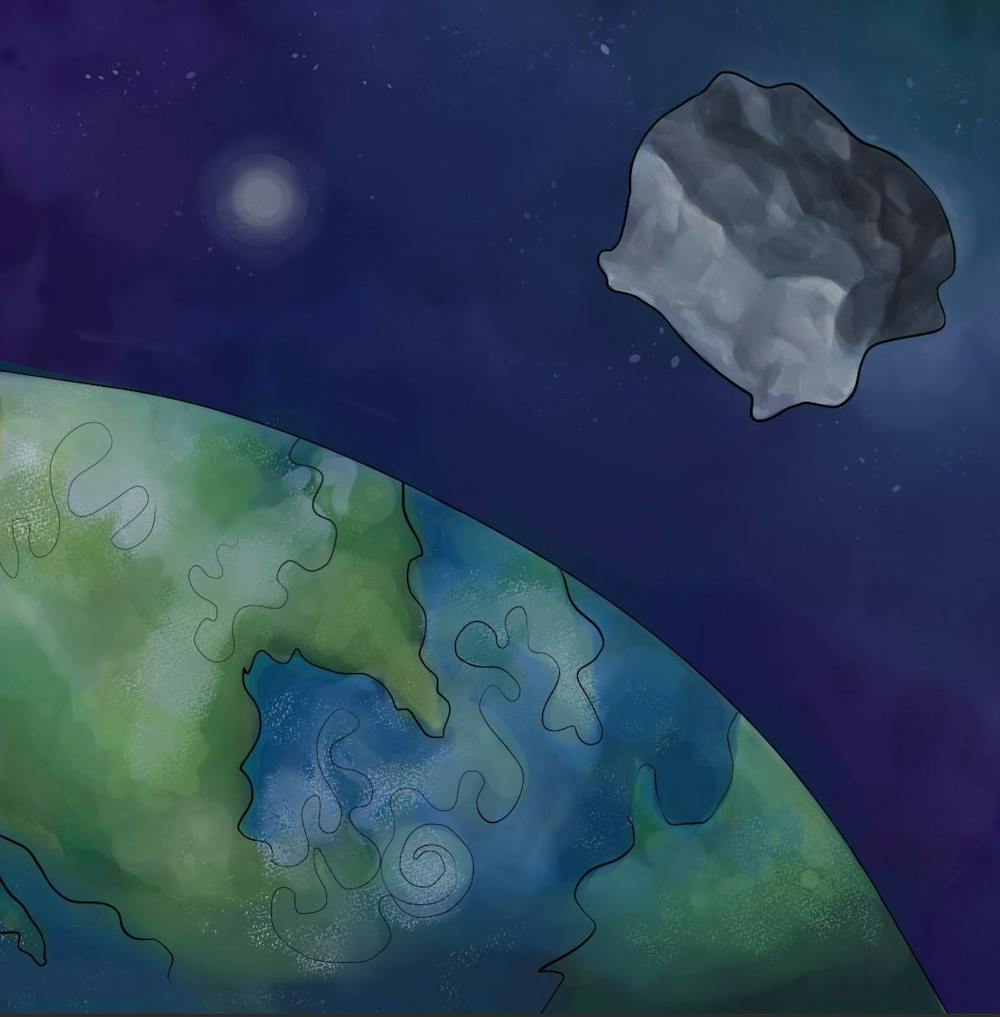For the next two months, the moon will have a temporary companion in its orbit around the Earth.
A small asteroid, called a “mini-moon,” will partially circle the Earth before returning on an unfettered path through space.
These “mini-moons” are a product of near-Earth asteroids, which are “bits of rock” that orbit the sun, but occasionally pass close to the Earth and moon, according to Ian Dell’Antonio, a professor in the physics department. “The gravity of the Earth and moon can alter their orbit enough so that while they’re still orbiting the sun, they end up in a path around the Earth,” he said.
The current asteroid is approximately 33 feet across, which is about the size of a school bus.
The impact of Earth’s gravitational pull depends on the speed and distance of the asteroid, according to Ning Lan ’26, an undergraduate student concentrating in astrophysics. “When the speed of the asteroid is really low and the distance is really close, there's a higher chance of being captured by the Earth,” she said.
This “mini-moon” emerged from an asteroid named 2024 PT5, officially joining Earth’s orbit on Sept. 29. The asteroid was found by a group of telescopes positioned around the world named ATLAS, short for Asteroid Terrestrial-Impact Last Alert System.
The major difference between a “mini-moon” and a regular moon is the temporary or permanent binding of the moon to the Earth’s orbit, according to Dell’Antonio. Since the moon is constantly traveling at a speed slower than the escape velocity, or the necessary speed to escape Earth’s gravitational pull, the moon will always be “bound” to the Earth, he added. On the other hand, a “mini-moon” is able to escape the Earth’s orbit when its speed becomes higher than the escape velocity.
Unfortunately, the “mini-moon” will not be visible to the naked eye and it will be difficult to see without a big telescope, Dell’Antonio mentioned.
To measure the brightness of astronomical objects, astronomers use a magnitude scale called apparent magnitude. A lower magnitude indicates a brighter object, while a higher magnitude indicates a dimmer one.
“The brightness of the object is 27 magnitudes,” said Mahmoud Hallak ’25, a coordinator for the Astronomy Club. “The limit for the human eye is about a magnitude of six, so the difference of 21 magnitudes ends up being 200 million times dimmer than the limit of what we can see.”
Hallak mentioned, though, that there are many other interesting astronomical phenomena that are visible using equipment available at Brown.
“I would recommend going to see our own moon first,” Hallak said.

Claire Song is a university news and science & research editor for The Herald. She is a sophomore from California studying Applied Math-Biology. She likes to drink boba in her free time.





